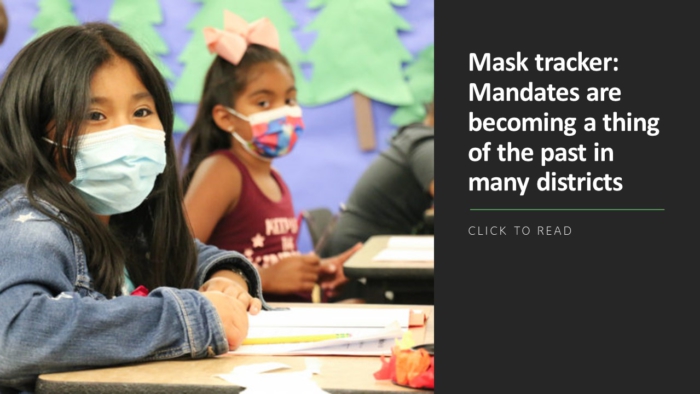
In any school year and at every grade level, there is a tremendous amount of material for students to learn. As education researcher Robert Marzano has said, if we taught students each and every one of the standards that we have for students in the United States, we would have students in class year-round and they wouldn’t graduate until they were well into their 20s.
This year, of course, the challenge is even greater. Students have returned to school with larger and more varied gaps in their learning than usual, especially among middle schoolers. While our teachers have just as many standards to get through, many students may be lacking the skills those standards are built upon. At Schuyler Community Schools, we’re making sure students have the foundational knowledge they need to understand this year’s material by prioritizing standards. Here’s how we’re doing it.
1) Prioritize, don’t cut.
We began prioritizing our standards years ago. While we certainly don’t encourage teachers to skip any standards, we know that students simply do not have the time to attain deep mastery of every standard. We need targets for what we’re asking students to learn by the end of each year.
We look at a range of factors as we’re prioritizing standards, including:
- What kind of leverage does a standard have in future learning?
- What kind of breadth and depth does the standard have?
- Will it be assessed?
The idea is not to throw out the standards with less depth or that students won’t be assessed on. We still expect our teachers to touch on each standard, but at the end of the year, our priority standards are the must-haves, the standards that we not only expect teachers to teach, but that students must understand and master to continue their learning progression.
This work is ongoing. In Nebraska, we began using the ACT as a state assessment, so we’re now looking at how to reprioritize our standards to account for what’s assessed by the ACT. Students take the ACT in 11th grade, but they don’t learn everything it assesses in their junior year, so we’ve gone all the way back to our standards from kindergarten to ensure we’re prioritizing the standards that align with those later skills.
2) Identify the most important and challenging skills.
Last year, one of our partners, Renaissance, released a free resource, Focus Skills, that does similar work to our standards prioritization. Built on learning progressions for each US state, Focus Skills reflect the reading and math standards that are prerequisites for future learning. They’ve also added Trip Steps, which are math skills that are much more difficult than other standards at the same grade level.
By looking at the Focus Skills that are also Trip Steps, we can ensure that teachers are spending the most time on skills that are absolutely necessary for future learning and difficult for students to understand. Or, in a year like this one, in which students have many gaps in their learning, we can help teachers identify the skills from the previous year that are most critical for students’ current grade, as well as which ones they are most likely to need a little refresher on—whether they missed the skill because of the pandemic or not.
3) Assess, scaffold, and intervene with focus.
With our priority standards, Focus Skills, and Trip Steps, our teachers have a clear understanding of what skills are absolutely essential for future learning, what skills from last year are key to understanding this year’s material, and what skills students may be struggling with simply because they are more challenging.
With that in mind, our teachers look through benchmark assessments from the beginning of the school year to see where students may have missed some instruction. We can’t just stop this year’s grade-level instruction to throw in everything from last year, so we’ve been trying to find ways to adjust our scope and scaffold in the pieces of this year’s material that build upon what they may have missed last year.
One way we’re doing this is with daily bell ringers. This year, those bell ringers have become an opportunity to refamiliarize students with concepts from the previous grade that are relevant to the day’s lesson. It’s not a solution to a class full of students who missed a critical concept, but it is useful in a class of students who are familiar with a key skill, but who didn’t get to learn it as deeply the first time around as they might have in a more typical year.
To address the more concerning bits of learning that students were unable to finish last year, we’ve had to tweak our schedule a bit. For example, our middle school leadership team adjusted the schedule to include a 30-minute intervention time opposite student lunch times. Students are assigned according to their needs based on their Star Assessment scores, which are compared to our state benchmarks. Students who are performing below standards level get intensive intervention, those who meet standards level get on-level interventions, and those who are performing at the secure level get enrichment activities. Schools are reassessing students once a month to determine if they are ready to move to new groups.
Of course, our teachers are also doing similar work to address unfinished learning with small groups in their classrooms, just as they would in a normal year.
When the pandemic disrupted learning, we were fortunate that our teachers were already familiar with prioritizing standards. In the end, the approach that’s working for us this year is the same approach we’d take any other year, if a little more intense: Assess students to meet them where they are, intervene as appropriate, and be ready to spend a bit more time on the skills that are truly essential for their future learning.
Dave Gibbons, Ed.D., is the curriculum director at Schuyler Community Schools. He can be reached at [email protected] .
More from DA



